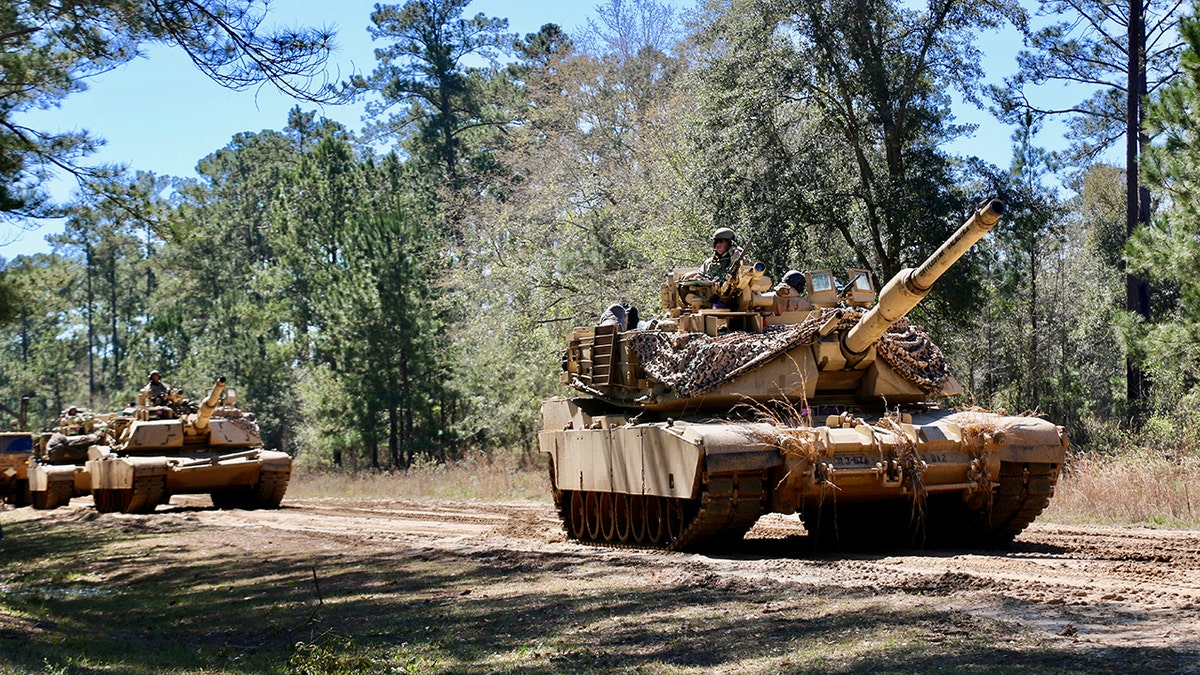Fox News Flash top headlines for October 25
Fox News Flash top headlines are here. Check out what's clicking on Foxnews.com.
It destroyed Iraqi T-72 tanks in the Gulf War in now-famous tank battles, using highly accurate, long-range thermal sensors able to destroy targets without being seen itself. It patrolled the streets in Iraq in 2003. It is a major mechanized attack platform with massive amounts of fire-power and an “intimidating” presence when used as a psychological deterrent. It was built in the 1980s as part of the Army’s famous Big 5.....the U.S. Army’s classic Abrams Main Battle Tank.
Why won’t it go away? Why isn’t a 1980s platform obsolete? Why hasn’t the Army built a new heavily armored next-gen large main battle tank? With future war expected to be long-range, fast, networked, expeditionary, disaggregated, and driven by robots, is there still a place for heavy armor?
The answers to these questions are as interesting as they are strategically and tactically significant. Today’s M1A2 SEP v3 and emerging v4 variant Abrams is, quite simply and directly, not the same tank as it used to be.

File photo - M1A1 Abrams main battle tanks assigned to 3rd Battalion, 67th Armored Regiment, 2nd Armored Brigade Combat Team, 3rd Infantry Division stage prior to a tactical movement during Spartan Focus, at Fort Stewart, Ga. (U.S. Army photo by Spc. Andres Chandler/released)
The platform is almost entirely different than it was in the 1980s, 1990s, 2000s and even more different in recent years. The reasons why are clear … new armor composites, sensors, ammunition, firepower, robotics, active protection, computing and on-board electrical power, among other things.
SOLDIERS USE AI TO FIRE PRECISION GRENADES, GUIDE DRONE ATTACKS
The most recent Abrams are equipped with new, much-higher fidelity, longer-range Forward Looking Infrared Sensors able to find and transmit target information from increasingly longer stand-off ranges, a key development given that future war is expected to be much more disaggregated and driven by more dispersed maneuvering. Longer range weapons, air-ground integration, unmanned systems and much greater networking are expected to make concentrated groups of armored forces much more vulnerable to enemy attack. Therefore, having an ability to find and destroy targets without being detected during forward attack operations is naturally quite significant.
Of equal if not greater significance, sensor upgrades are quickly being improved exponentially through the use of newer applications of computer processing power and AI-enabled algorithms. Today’s Abrams has completely different computing systems than it did at its inception and previously separated pools of sensor data can now be aggregated, organized and transmitted much more quickly and efficiently than was ever the case before. This technology continues to accelerate at lightning speed, meaning that the time commanders would typically need to find and attack different, potentially dispersed enemy targets, continues to be shortened. What used to take minutes, can now take seconds in certain circumstances. Such a technical ability to integrate EO-IR (Electro-Optical/Infra-Red) sensors with thermal sensors and fire control systems enables Abrams tanks to, for instance, find and destroy multiple enemy targets in rapid succession.
The Abrams has also, over the years, been made much for survivable against newer forms of enemy attack; the platform has gotten new add-on armor configurations to defend against IEDs, as the Abrams was the most survivable armored vehicle able to conduct counter-IED “road-clearing” missions to ensure safe passage for more vulnerable vehicles in Iraq. Years ago, the Abrams was given what was called a TUSK, Tactical Urban Survival Kit, a series of surrounding armored plates to protect .50-cal gunners emerging from the turret for medium-caliber machine-gun attack. While an Abrams is basically impervious to small arms fire, gunners exiting to fire a .50-cal or small arms weapons would of course immediately become vulnerable to enemy fire.
CLICK HERE TO GET THE FOX NEWS APP
The Abrams has also been given the Trophy Active Protection System, a well-known and successfully tested integrated system using sensors to find and track approaching attack munitions such as RPGs or even Anti-Tank Guided Missiles.
Once approaching enemy fire was found and located, data was sent through a computer-empowered fire control system which then shot out an interceptor designed to hit, explode and stop the incoming munition. The Abrams can use reactive armor as well to stop RPG attacks, and the platform is of course built to withstand heavy amounts of incoming fire and sustain functionality.

